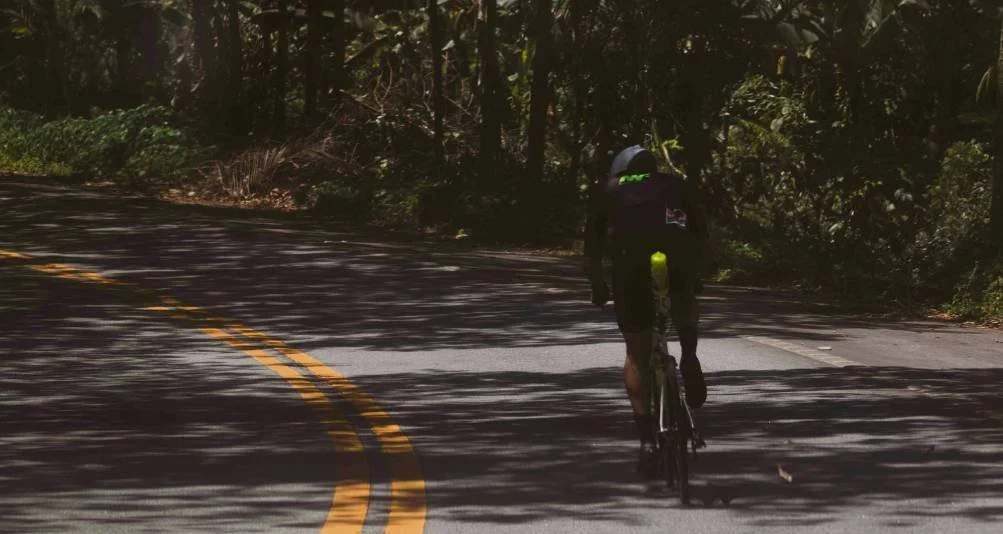Olympic Triathlon: 10 Zone 4 / Threshold Bike Workouts
Summary:
Zone 4 cycling, typically 91–105% of FTP and 87–93% of max heart rate (RPE 7–8), is where Olympic-distance triathletes build race-day strength. Threshold training improves your ability to hold high power for longer, clear lactate more efficiently and transition to the run with control. These sessions enhance sustained output, mental focus and performance under pressure. Include one or two per week to sharpen your 40 km bike split and ride with purpose on race day.
Why Threshold Bike Training for Olympic Triathlon
Dialling in your threshold power is key to a fast, efficient bike split and a strong run off the bike. In Olympic-distance racing, the 40 km bike leg is short enough to require intensity but long enough to demand strategy and pacing. Threshold training, riding at 91–105% of your functional threshold power (FTP), target your lactate threshold, the intensity where lactate is produced at higher levels but your body is still able to clear it efficiently. Dialling the ability to sustain high outputs without blowing up, allowing you to race smart and transition to the run strong. Structured threshold sessions build both aerobic capacity and mental resilience, making them critical for peak race performance.
Zone 4 Bike Metrics
FTP: 91–105%
Heart Rate: 87–93% of Max HR
RPE: 7–8 (Hard, but sustainable)
Frequency: 1–2 sessions/week during build phase
Use FLJUGA’s free FTP and HR zone calculators to stay dialled in.
These 10 threshold-focused bike sessions are designed to sharpen your race fitness, improve muscular endurance and build the toughness needed to thrive on race day!
10 threshold bike sessions
1. Threshold Repeats
Purpose: Build sustained power at race-specific intensity
Warm-Up: 15 min spin + 3 cadence builds
Main Set: 4 x 10 min @ Zone 4 (5 min easy spin between)
Cool-Down: 10 min spin
2. Broken Threshold Blocks
Purpose: Accumulate time at threshold with short breaks
Warm-Up: 12 min spin
Main Set: 3 x (6 min + 4 min) @ Zone 4 (2 min spin between sets)
Cool-Down: 10 min spin
3. Progressive Threshold Build
Purpose: Step through intensities to reach controlled threshold
Warm-Up: 15 min spin
Main Set: 15 min @ Zone 3, 15 min @ Zone 4
Cool-Down: 10 min spin
4. Over-Under Threshold Set
Purpose: Train your ability to recover just below threshold
Warm-Up: 15 min spin
Main Set: 4 x (3 min @ Zone 3 + 6 min @ Zone 4)
Cool-Down: 10 min spin
5. Continuous Threshold Block
Purpose: Hold Zone 4 power for an extended aerobic effort
Warm-Up: 15 min spin
Main Set: 25 min continuous @ Zone 4
Cool-Down: 10 min spin
6. 2 x 20 Minute Thresholds
Purpose: Build aerobic resistance with longer intervals
Warm-Up: 15 min spin
Main Set: 2 x 20 min @ Zone 4 (6 min spin between)
Cool-Down: 10 min spin
7. Short Threshold Intervals
Purpose: Improve repeatability at threshold
Warm-Up: 12 min spin
Main Set: 6 x 5 min @ Zone 4 (2 min spin between)
Cool-Down: 10 min spin
8. Threshold Pyramid
Purpose: Vary time under tension at a consistent effort
Warm-Up: 15 min spin
Main Set: 5 min – 10 min – 15 min – 10 min – 5 min @ Zone 4 (3 min spin between)
Cool-Down: 10 min spin
9. Big Gear Threshold
Purpose: Develop muscular endurance at race intensity
Warm-Up: 15 min spin + cadence drills
Main Set: 3 x 4 min @ Zone 4 in big gear, low cadence (4 min spin between)
Cool-Down: 10 min spin
10. Threshold into VO2 Max
Purpose: Add intensity under fatigue to simulate race surges
Warm-Up: 15 min spin
Main Set: 20 min @ Zone 4 + 3 x 2 min @ Zone 5 (3 min spin between VO2 reps)
Cool-Down: 10 min spin
Final Tips for Threshold Bike Success
Train with Power or Heart Rate: Keep efforts precisely in the right zones.
Practice Aero Position: Hold your race position during intervals to build comfort.
Dial In Your Fuelling: Even short races need smart hydration and Fuel management.
Integrate these threshold sessions into your training plan and you’ll be well on your way to a stronger, faster Olympic-distance bike leg!
FAQs: Threshold Sessions
How often should I do threshold sessions?
Most athletes include 1–2 threshold-focused sessions per week, balanced with easier endurance rides.
Should I stay in aero position during threshold rides?
Yes. Practicing your race position during hard efforts improves comfort and aerodynamics on race day.
Is threshold training better indoors or outdoors?
Both have value! Indoors allows precise effort control; outdoors builds handling skills and real-world strength.
FURTHER READING: BUILD YOUR OLYMPIC POWER
Olympic Triathlon: What Is Zone 2 / Endurance?
Olympic Triathlon: What Is Zone 3 / Tempo?
Olympic Triathlon: What Is Zone 4 / Threshold?
Olympic Triathlon: What Is Zone 5 / VO2 Max?
Olympic Triathlon Threshold Sessions
Olympic Triathlon: 10 Threshold Swim Sessions
Olympic Triathlon: 10 Threshold Run Sessions
Olympic Triathlon: Recovery Week
Olympic Triathlon: Beginner’s Guide
Final Thoughts
Building your threshold power is one of the fastest ways to boost your Olympic triathlon bike split and set up a strong run. When you can ride hard without tipping over the edge, you preserve energy, control your pacing and avoid burnout before the 10K.
Threshold sessions teach your body to handle pressure and your mind to stay composed. Integrate them weekly, monitor your intensity and train with purpose. The payoff is real, faster times, smoother transitions and a bike leg that sets the tone for a strong finish.
Always consult with a medical professional or certified coach before beginning any new training program. The information provided is for educational purposes only and is not a substitute for personalized advice.

